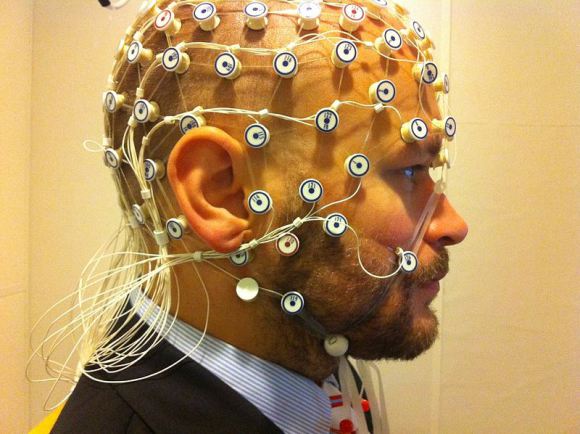Neuromarketing (bit of a hoax?)
Whilst neuromarketing has often prominently featured in the media (getting into the brains of clients to subliminally seduce them into frivolity), a surprising lack of reviewed research lays a shoddy foundation. Back in 2010 a review examined the research basis behind what profit-driven services were offering. Out of 16 companies found to provide neuromarketing, 5 didn’t employ academics, only 5 included academic research to back up their claims, and while 9 of these companies employed someone with an academic background, the techniques and technology described was generally non-specific waffle (with 3 providing no description whatsoever).

The lure of devising the ultimate campaign may be a tantalizing prospect – finding that one gimmick that’ll have all the attention flying your way (Neuromarketers like to remember the days of the “Pepsi Challenge” and resulting Pepsi Paradox – in blind taste tests Pepsi won the votes of tasters. In knowing whether it was Pepsi or Coca-cola they were drinking, 75% vote went to Coke).
Yet an rather large media presumption seems to exist in current expectations of this field (media-hype– searching ‘neuromarketing’ on ncbi yields only 15 results). It's rarely made clear that distinguishing studies that can tell current mental states in association with a product (via fMRI, EEG) to studies that will predict what we want are quite different ballgames. Knowing that we hate baked beans and recording our observed brain patterns doesn’t necessarily explain the complex mingling of taste, advertising and emotional-association that will influence such a preference. Even the most recent study published only recognises that EEG data may convey info about what goes on in our brain while we watch adverts, and may tell us how to make a marketing campaign memorable – Which even the most clueless of marketers knows can be achieved by a good understanding of today’s culture.

OK, so supporters may splutter and argue “we contributed to the field! We now know that directional gaze in adverts models directs our gaze too!” or may site prior studies – One example being neuroimaging-for-marketing founder Gerry Zaltmans’ increasing of a company’s revenue 4 times over during a 1990’s study. YET, such research is conducted already within neuroscience (eye-tracking being a prime feature in attention-tracking within animal experiments). Equally studies showing improvement are nigh on meaningless without a control study e.g. a marketing improvement using human intuition, or even a no-marketing control observing market booms and busts.
So. You can see there’s some cause for scepticism. Unlike neuroeconomics which employs all those excellent prisoner’s dilemma games, neuromarketing is a much hairier, suspicious-looking beast. A beast that enjoys association with such monitors as ‘galvanic skin resistance’ (how sweaty your surface skin gets), respiration patterns and skin temperature. All these tests – and I apologise for crudeness – somehow seem akin to hooking your partner up to a lie detector test to assess your arousing-prowess. “Tickling your big toe while showing you a wide grin.. aroused? ARE YOU? ARE YOU??”... It all seems to be missing the point.
Now this isn’t to say neuromarketing is thoroughly flawed and agog to the manic practices of water-imbibing homeopaths. There’s a decent approach in using neuroscience, marketing, psychology and some darn solid-sounding statistics to chase out what unknown little factors influence us. Such factlets as quoted on QI may even have resulted from such studies (the most relevant one springing to mind being the fact that men’s eyes apparently automatically flicker to the crotch of animal or human upon first seeing them). Similarly, an example behavioural economics study showed the anchoring effect of “..apparently irrelevant information in the purchasing process of a product or service”. In this study the purchasing effect of different ID numbers (low or high) was a decisive influencer to the amount participants were willing to pay. This study took on board that a “decision is extremely influenced by how the choices are available or how they are placed in context”, going on to explain that
“The suggested number can only be considered an anchor if the person is interested in buying the product. What happens to people in this situation is that they tend to be influenced by information available in the environment and at the same time, after the decision is made, they cling strongly to defend this decision, at any cost.”
– and indeed, the authors seem to prove this true.
To summarise a somewhat meandering exploration: Neuromarketing has 15 reviewed research articles. Neuroeconomics on the other hand has at least 158. - I know who I’d trust to formulate my population-manipulation schemes (& neuroeconomics in case you haven’t read about it, has a great bag of sections on how to influence your opponents: alternately phrased: how to wheedle what you want out of a social-finance situation). As a last aside, here’s a great clip of Capuchin monkeys. As we can see, reciprocity and fairness are very much seen outside of humans!
For the video, please follow this TED link to Frans de Waals talk on the Moral Behaviour of Animals: https://www.ted.com/talks/frans_de_waal_do_animals_have_morals.html
https://www.ncbi.nlm.nih.gov/pmc/articles/PMC3152487/ https://ieeexplore.ieee.org/xpl/login.jsp?tp=&arnumber=6227840&url=https%3A%2F%2Fieeexplore.ieee.org%2Fxpls%2Fabs_all.jsp%3Farnumber%3D6227840
https://www.ncbi.nlm.nih.gov/pubmed/22678840
https://aladinrc.wrlc.org/handle/1961/10546
https://www.pearlsomani.com/downloads/NeuroMarketing_Pearl.pdf
https://ojs.excelingtech.co.uk/index.php/IJLTFES/article/view/412/212